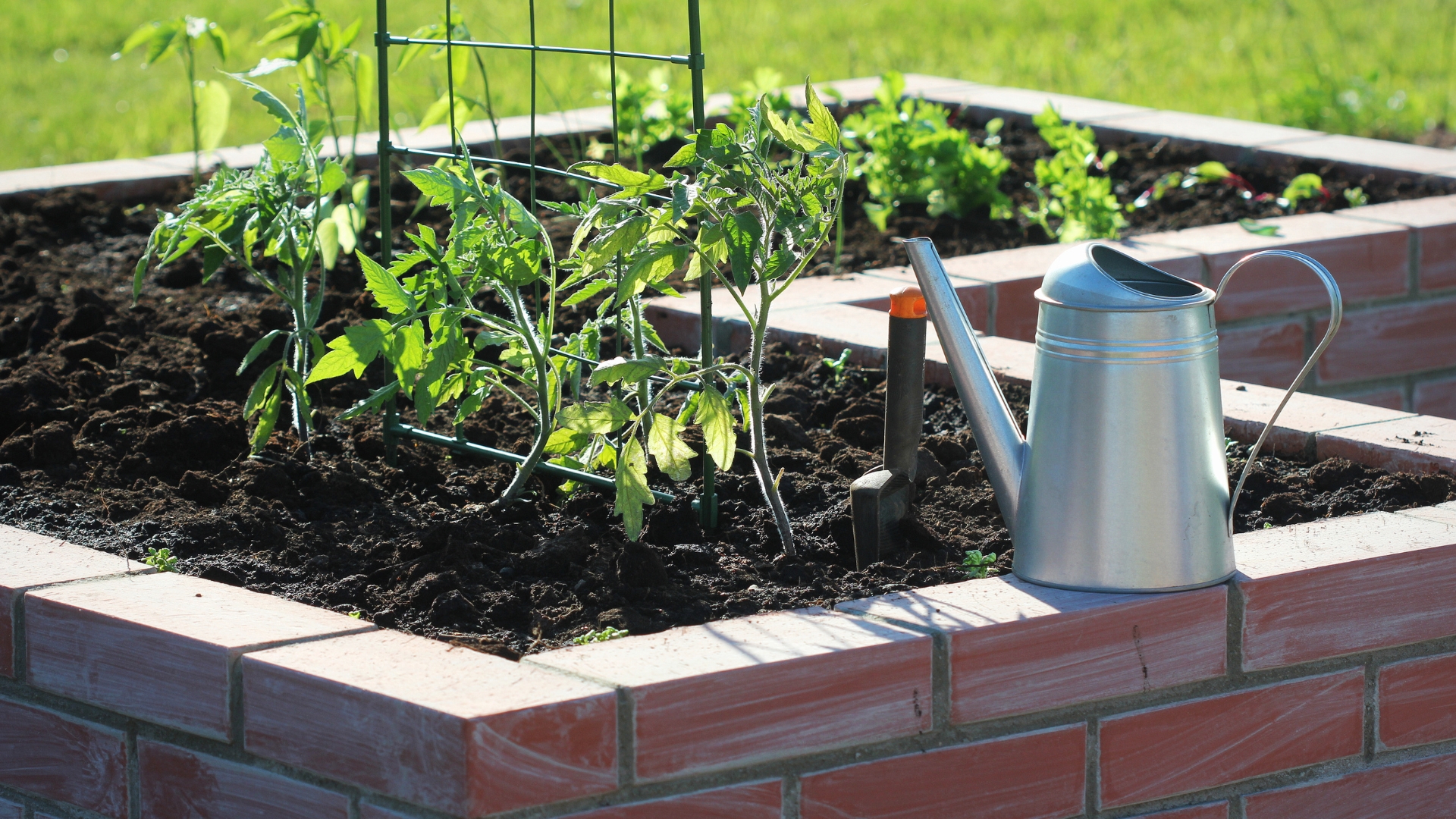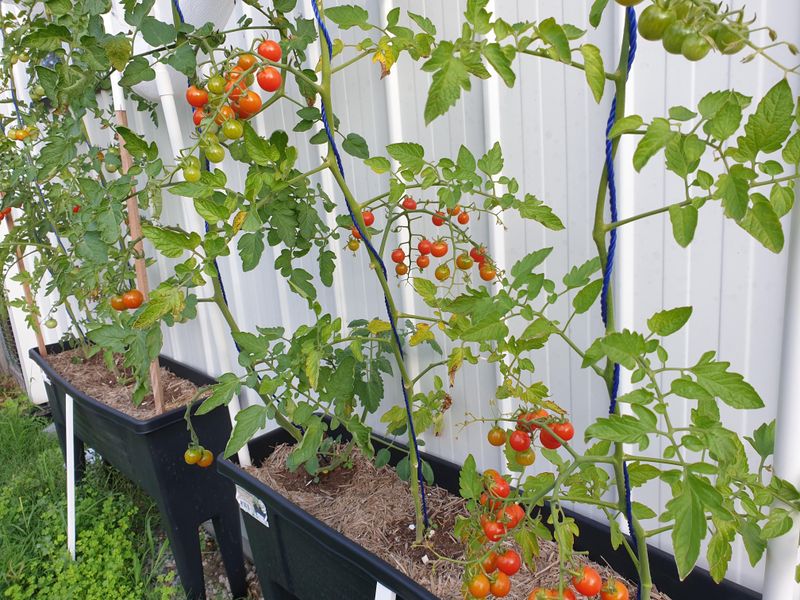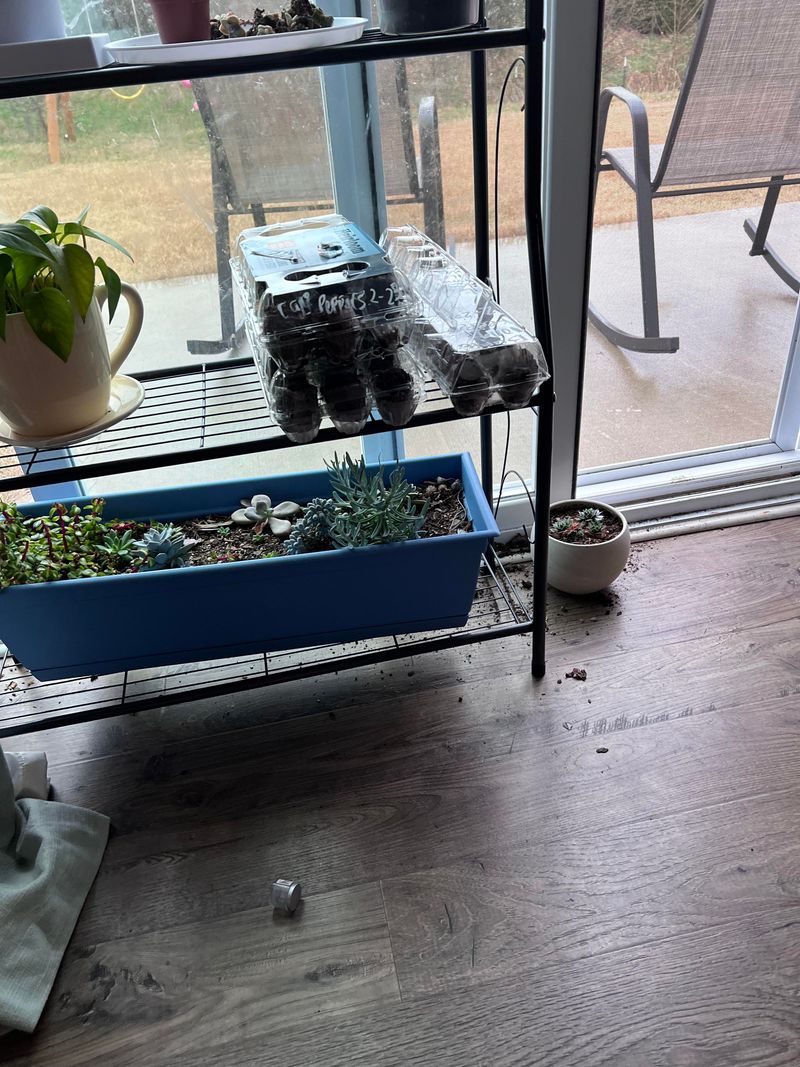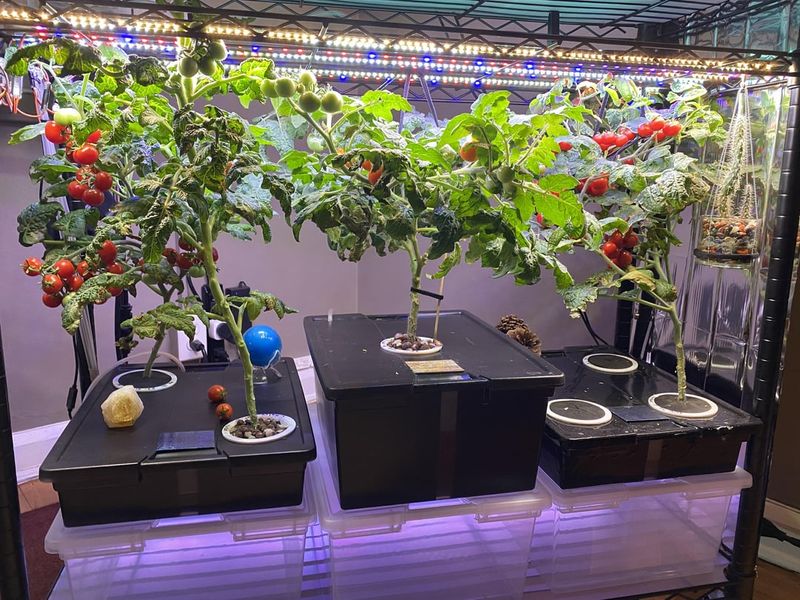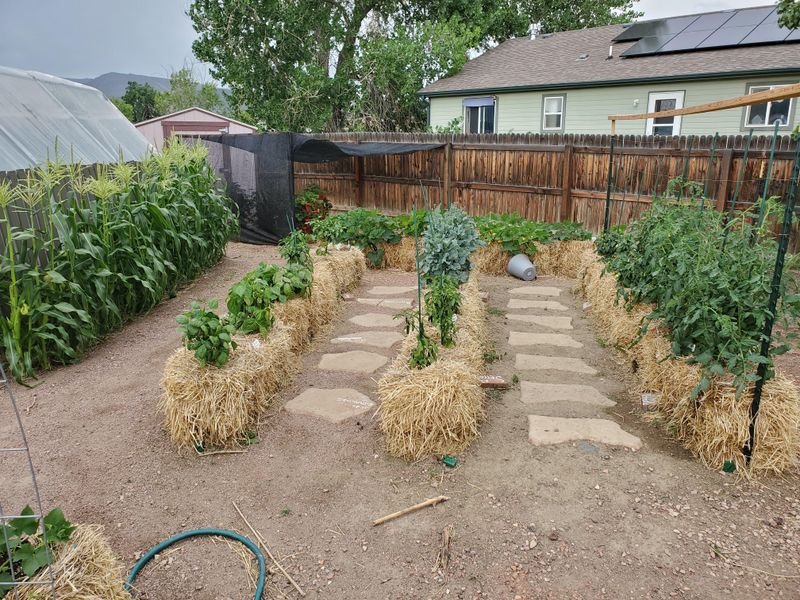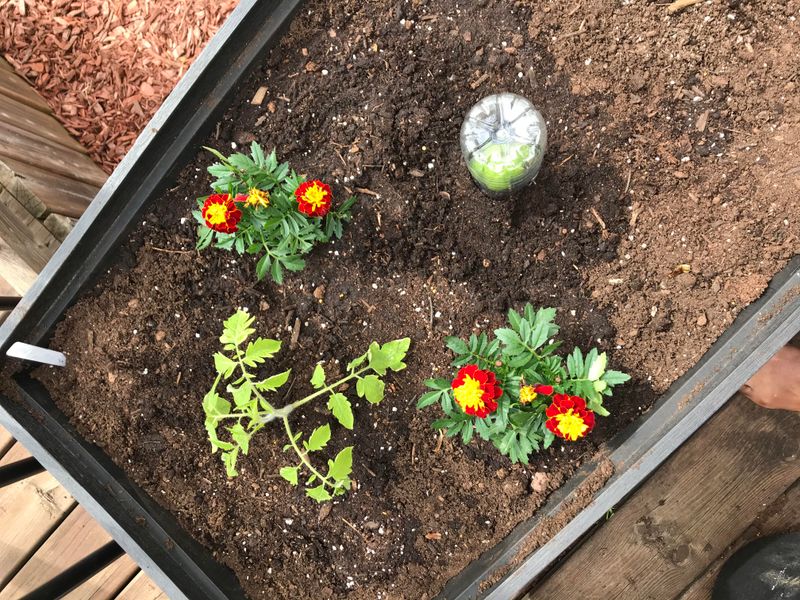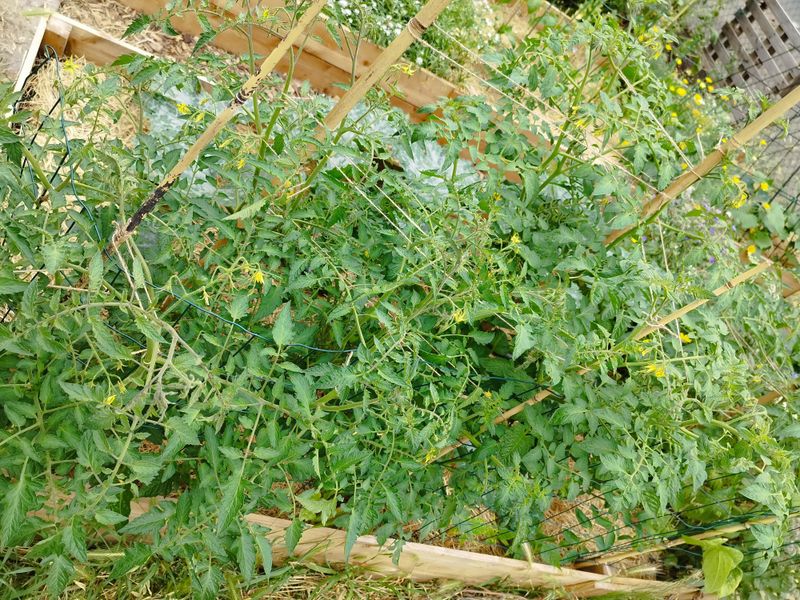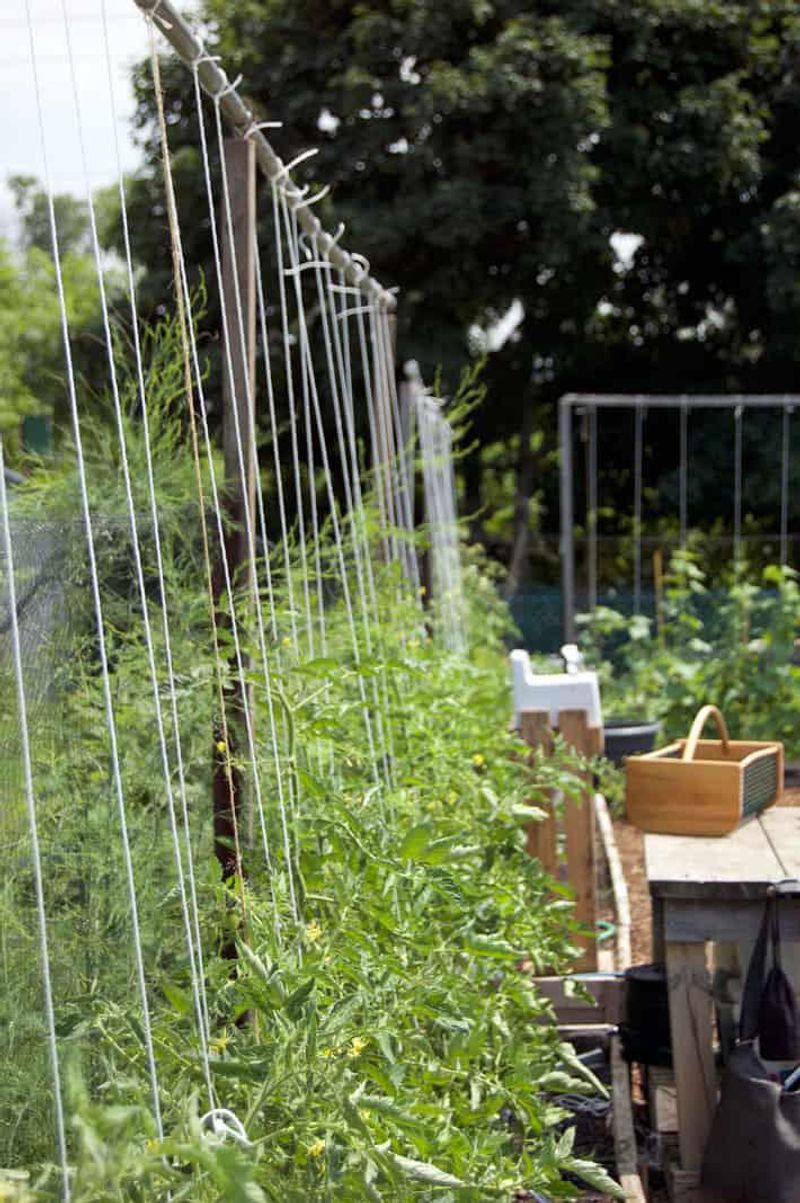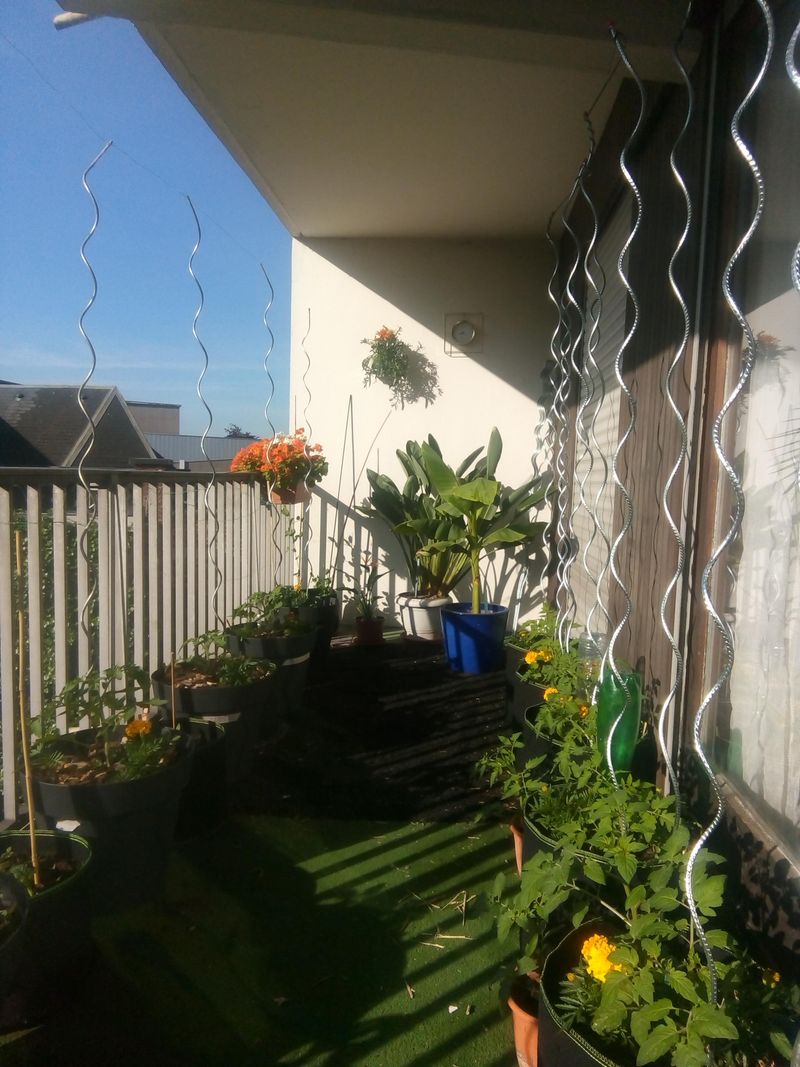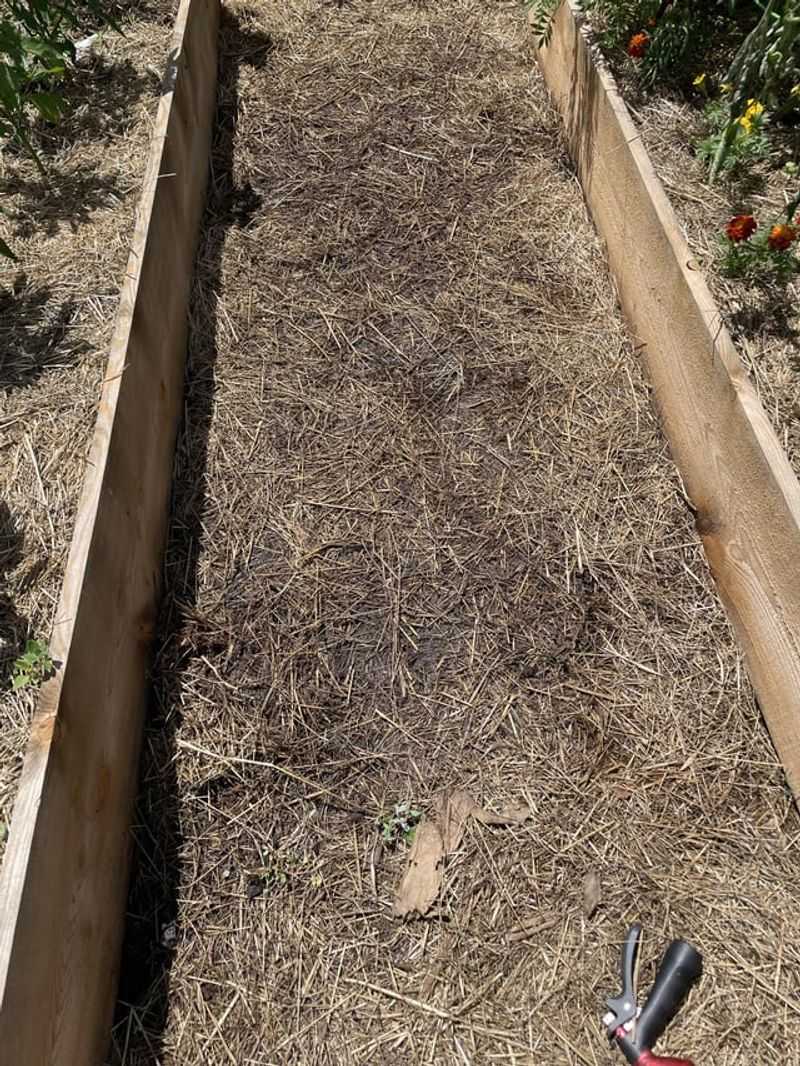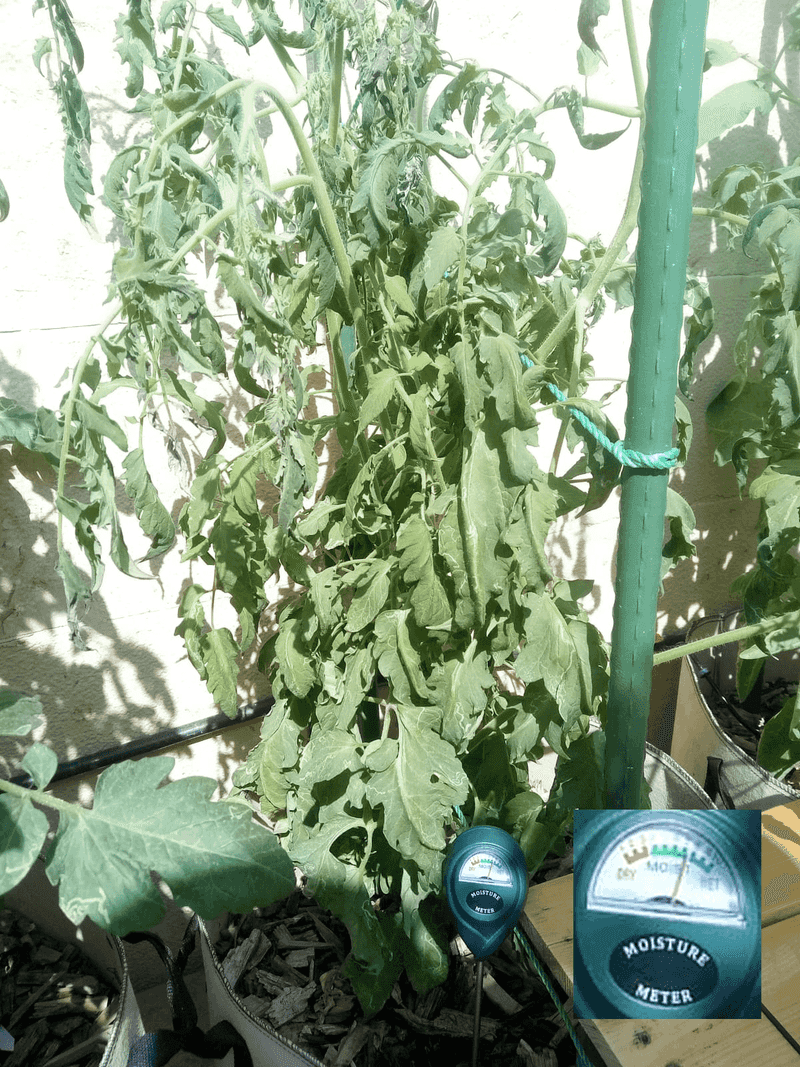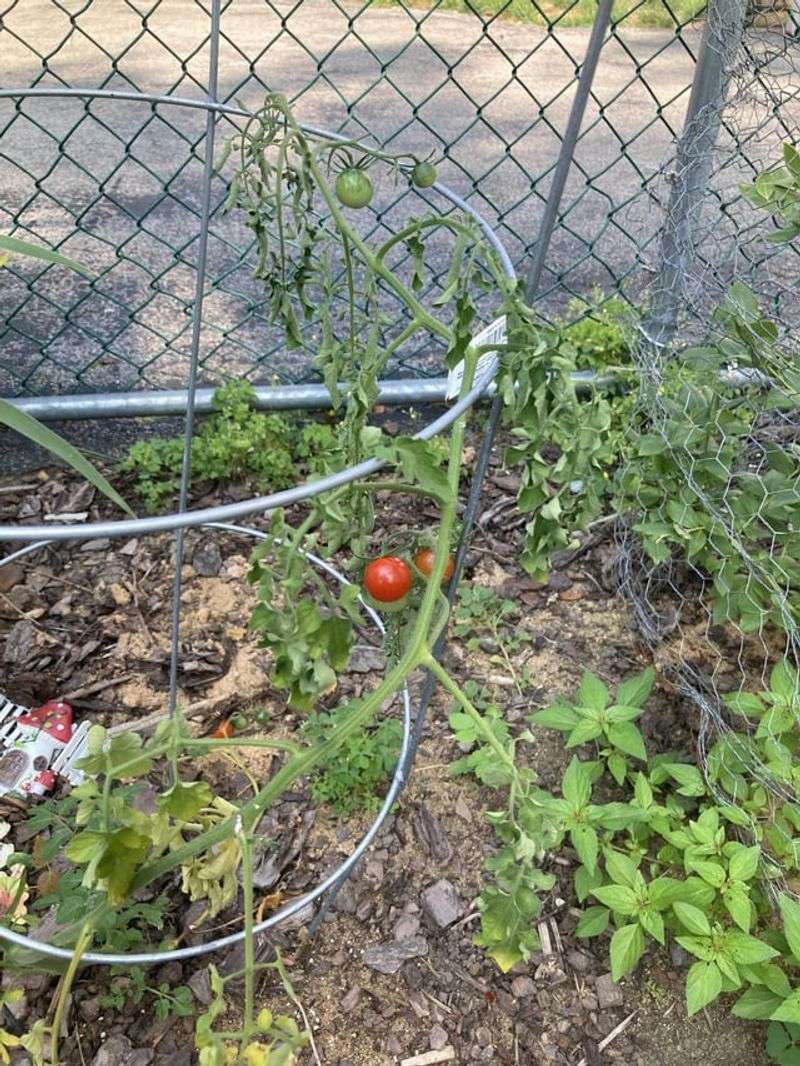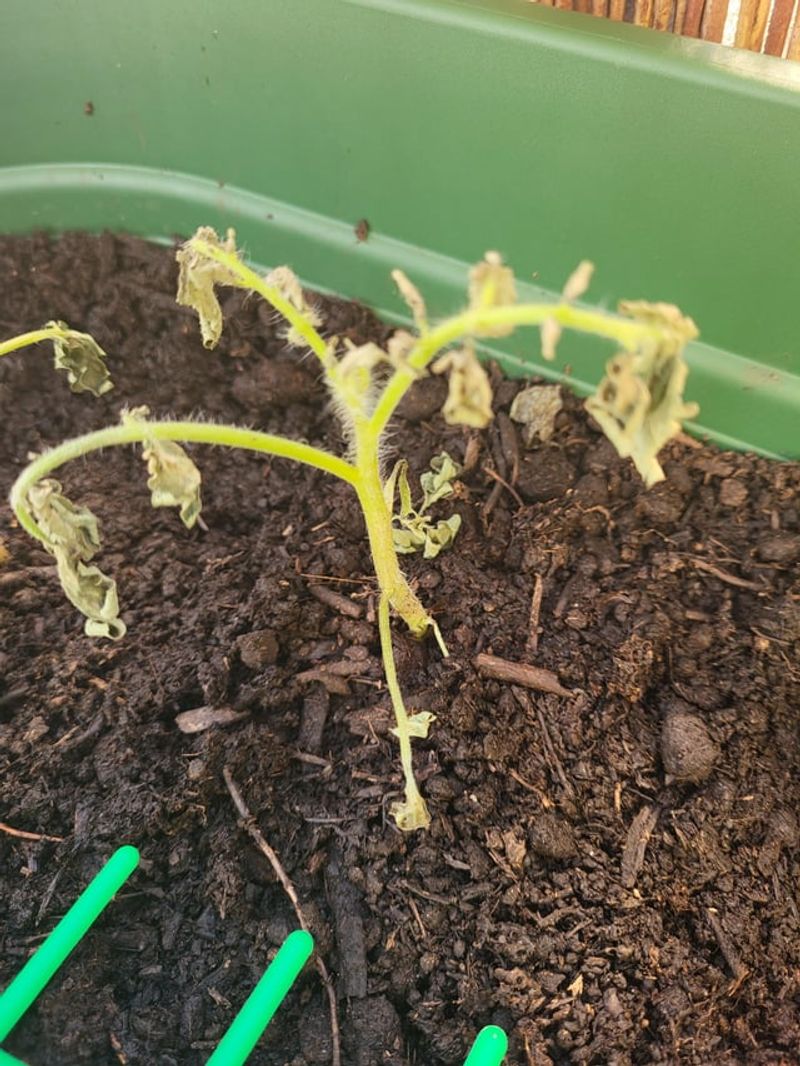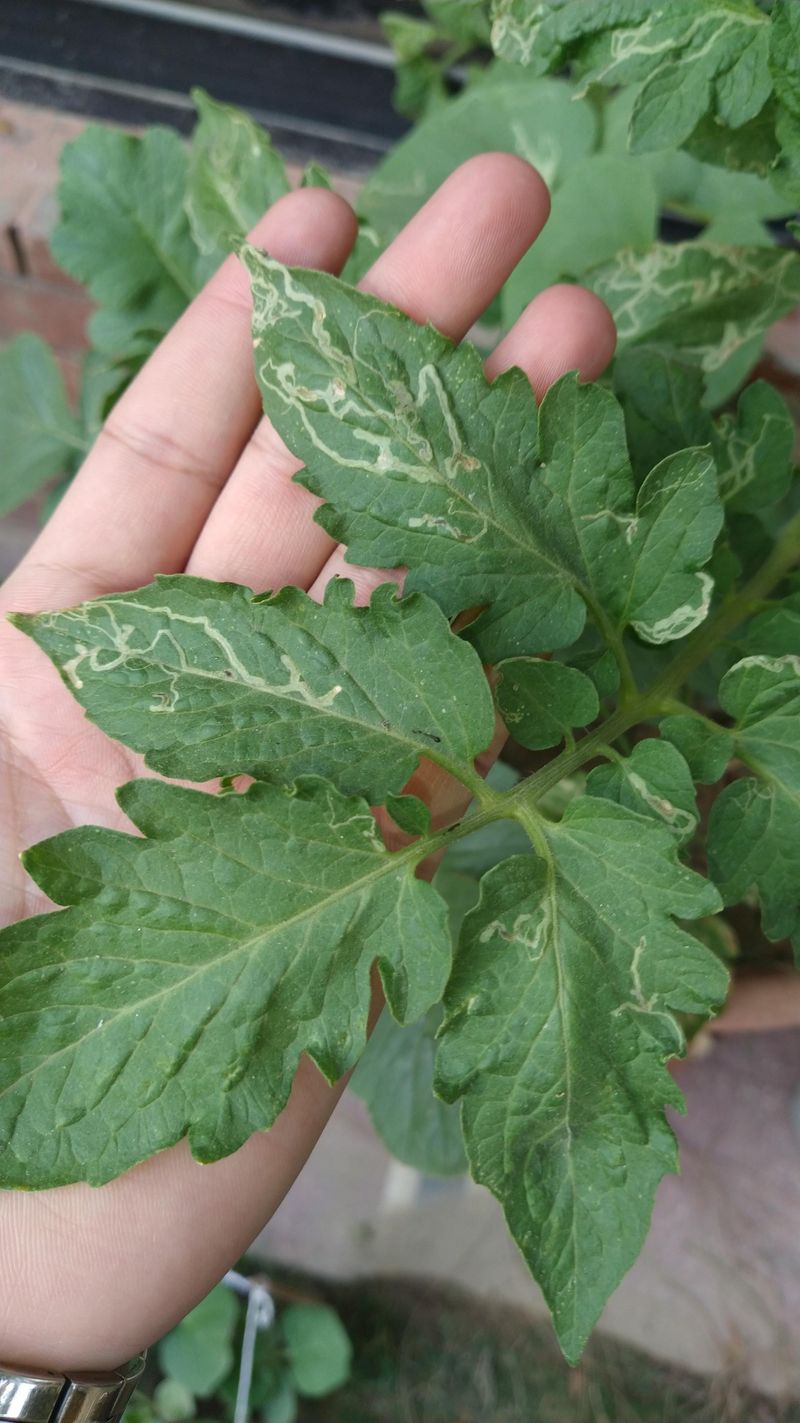Tomatoes are picky little plants—they love the sun, but they definitely don’t thrive everywhere. I’ve learned the hard way that choosing the wrong spot can mean soggy leaves or barely-there fruit.
Want to grow the juiciest tomatoes? You’ve got to pick just the right spots where they can soak up the warmth and thrive. Trust me, I’ve found the spots that will make your tomatoes sing and the ones that’ll leave them sulking.
Let’s make sure your tomato plants get the best start!
1. Raised Garden Beds
Raised beds create the perfect environment for tomato roots to thrive. The soil warms up faster in spring, giving your plants an early start when other gardeners are still waiting for ground temperatures to rise.
Good drainage prevents root rot, while the defined space makes it easier to amend soil specifically for tomatoes’ needs. I’ve found my tomato harvests doubled after switching to raised beds because the plants develop stronger root systems.
The elevated height also makes maintenance and harvesting easier on your back – no more bending all the way to ground level!
2. South-Facing Wall
Growing tomatoes against a south-facing wall creates a microclimate that these heat-lovers can’t resist. The wall absorbs sunlight during the day and radiates warmth through the evening, extending your growing season by weeks.
My neighbor’s tomato plants against her brick wall consistently produce fruit two weeks earlier than mine in open ground. This setup works especially well in cooler climates where every degree of warmth counts.
The wall also provides wind protection, keeping delicate stems and leaves safe from damage that could slow growth.
3. Container Gardens
Containers offer unbeatable flexibility for growing tomatoes, especially in small spaces. You can position pots to follow the sun throughout the season or move them to shelter during storms.
I grow cherry tomatoes in 5-gallon buckets on my patio and love being able to bring them under cover when hail threatens. Choose containers at least 18 inches deep to accommodate tomatoes’ extensive root systems.
The confined space actually helps some varieties produce more fruit, as the plant focuses energy on reproduction rather than unlimited vegetative growth.
4. Greenhouse Shelves
Greenhouse growing extends your tomato season dramatically at both ends. Starting plants inside means you’ll be harvesting weeks before outdoor gardeners, and you can continue long after frost has killed outdoor plants.
The controlled environment reduces pest problems significantly. My greenhouse tomatoes rarely suffer from hornworms or other insects that plague outdoor plants.
Temperature management is crucial though – install vents or fans since tomatoes stop setting fruit when temperatures exceed 90°F. With proper ventilation, greenhouse tomatoes often produce twice as long as garden plants.
5. Straw Bale Gardens
Straw bale gardening creates an ideal growing medium for tomatoes with minimal effort. The decomposing straw generates heat that tomato roots love, while providing excellent drainage and aeration.
I started using this method three years ago and was amazed at how quickly my plants established themselves. Simply condition the bales with nitrogen fertilizer for two weeks before planting.
The raised height reduces bending and stooping during maintenance, and at season’s end, the partially decomposed bales can be composted. This method works particularly well in areas with poor native soil.
6. Companion Planted Beds
Strategic companion planting can supercharge your tomato harvest. Basil planted nearby not only repels harmful insects but actually improves tomato flavor – I’ve tested this myself with side-by-side comparisons.
Marigolds deter nematodes that attack tomato roots, while nasturtiums attract aphids away from your precious plants. The diversity creates a mini-ecosystem that reduces pest problems naturally.
Avoid planting tomatoes near potatoes, fennel, or corn, which can inhibit growth or compete for nutrients. My companion-planted tomato beds consistently outperform those with tomatoes grown alone.
7. Sloped Garden Areas
Gentle slopes provide natural advantages for growing spectacular tomatoes. Cold air flows downhill, protecting plants from late spring frosts that might damage plants in flat areas.
Water drainage is superior on slopes, preventing the root diseases that often plague tomatoes in soggy conditions. My sloped garden section consistently produces healthier plants with fewer fungal issues.
South-facing slopes receive more direct sunlight throughout the day, increasing soil temperature and extending your growing season. Just be sure to create level planting pockets to prevent erosion and help water soak in rather than run off.
8. Vertical Growing Systems
Vertical gardening maximizes tomato production in limited spaces while improving air circulation around plants. Trellises, cages, or strings allow indeterminate varieties to grow upward rather than sprawling across valuable garden space.
Fruit stays cleaner when lifted off the ground, reducing rot and pest damage. I’ve found that my vertically-grown tomatoes develop fewer blemishes and are easier to spot when ripe.
Harvesting becomes a breeze when you don’t have to hunt through sprawling vines. This method works particularly well for cherry tomatoes and other smaller varieties that won’t strain their supports with heavy fruit.
9. Hugelkultur Mounds
Hugelkultur creates self-feeding garden beds that tomatoes absolutely love. These mounds built over buried logs and organic matter hold moisture like a sponge while slowly releasing nutrients as materials decompose.
My hugelkultur tomatoes rarely need watering after establishment, even during dry spells. The composting wood generates gentle warmth that extends the growing season, especially beneficial in cooler climates.
The height of these mounds improves drainage while the organic material underneath attracts beneficial soil organisms that support plant health. They’re labor-intensive to build initially but require minimal maintenance for years afterward.
10. Rooftop Gardens
Urban rooftops offer surprisingly ideal conditions for growing tomatoes. The elevated position typically provides full sun exposure without shade from trees or buildings that often plague ground-level gardens.
Heat reflected from surrounding surfaces creates a warmer microclimate that tomatoes thrive in. My friend’s rooftop cherry tomatoes in the city consistently outproduce my suburban garden plants.
Container weight becomes the main consideration – use lightweight growing media and ensure your roof can support the added weight. The bonus: fewer pests find their way to rooftop gardens, meaning less damage to your precious tomato harvest.
11. Heavy Clay Soil
Clay soil creates a challenging environment that often leads to tomato failure. The dense structure restricts root growth and oxygen flow, causing stunted plants that struggle to access nutrients.
Water management becomes nearly impossible – clay stays waterlogged after rain, then forms a concrete-like crust during dry spells. My first tomato attempt in clay soil produced yellow, sickly plants that barely survived.
Fungal diseases run rampant in these conditions, particularly early blight and root rot. If you’re stuck with clay soil, consider raised beds or containers instead of fighting this losing battle.
12. Heavily Shaded Areas
Shade spells disaster for sun-loving tomatoes. These plants require a minimum of 6-8 hours of direct sunlight daily to produce fruit, making shady spots a recipe for disappointment.
I once stubbornly tried growing tomatoes in a partially shaded corner, resulting in tall, leggy plants with few flowers and almost no fruit. The plants focus energy on stretching toward available light rather than producing tomatoes.
Even varieties marketed as “shade-tolerant” will underperform without adequate sun. If your garden is shaded by trees or buildings, consider growing leafy greens instead – they’ll thrive where tomatoes struggle.
13. Near Walnut Trees
Walnut trees produce a toxic compound called juglone that’s particularly harmful to tomatoes. This natural chemical, found in all parts of the tree, inhibits growth and eventually kills susceptible plants like tomatoes.
The toxic zone extends well beyond the tree’s canopy – roots can spread 50-60 feet from the trunk, affecting soil far from the visible tree. My neighbor learned this lesson the hard way, losing an entire tomato patch planted 30 feet from her black walnut.
The effects persist even after tree removal, as decomposing roots continue releasing juglone for years. This is one gardening challenge that can’t be overcome with amendments or care techniques.
14. Waterlogged Locations
Poor drainage creates ideal conditions for tomato disaster. These plants absolutely hate “wet feet” and quickly develop root rot in soggy conditions, leading to wilting despite moist soil.
Low-lying garden areas that collect water after rain are particularly problematic. I once planted tomatoes in a spot that seemed fine until spring rains created standing water for days, killing half my plants within a week.
Even if plants survive, constantly wet conditions promote fungal diseases like late blight that can destroy entire crops. If your only available space has drainage issues, raised beds or containers are far better options than in-ground planting.
15. Previous Nightshade Locations
Rotating crops is crucial for tomato success, making recently used nightshade beds problematic planting spots. Tomatoes belong to the nightshade family alongside peppers, eggplants, and potatoes, all sharing vulnerability to the same soil-borne diseases.
These pathogens accumulate in soil over time and can persist for years. My garden journal helped me identify why one bed consistently underperformed – I’d been rotating between different nightshades without realizing the connection.
Best practice is waiting 3-4 years before planting tomatoes where any nightshade family member previously grew. This simple rotation strategy prevents disease buildup and leads to healthier, more productive plants.

